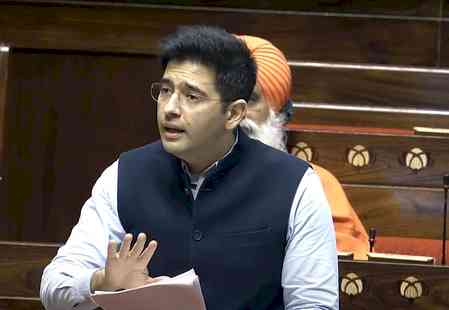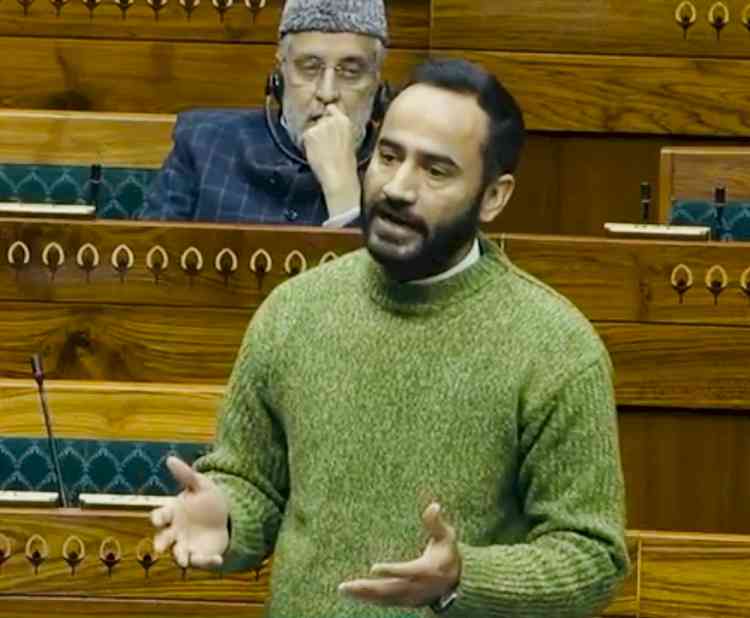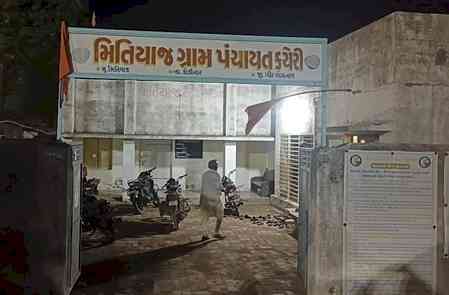Rain delays stubble burning in Punjab as experts grope for solutions
Burning of crop residue, a customary practice by Punjab and Haryana paddy growers that leads to an estimated economic loss of over $30 billion annually, besides being a leading risk factor for acute respiratory infection, especially among children, has picked up after a delay owing to high crop moisture.

VISHAL GULATI
Chandigarh, Oct 22 (IANS) Burning of crop residue, a customary practice by Punjab and Haryana paddy growers that leads to an estimated economic loss of over $30 billion annually, besides being a leading risk factor for acute respiratory infection, especially among children, has picked up after a delay owing to high crop moisture.
As per the Ludhiana-based Punjab Remote Sensing Centre, 96 active fire incidents were reported in Punjab on October 20, a steep fall from 950 on this day in 2020 and 788 in 2021. A total of 2,721 incidents have been reported in Punjab till October 20.
The reason for fewer crop fire incidents is widespread rainfall in the past week that delayed the crop maturity and its harvesting owing to increased moisture.
Smoke from the burning of residue in Punjab and Haryana contributes to Delhi's poor air, increasing three-fold the risk of acute respiratory infection for those living in districts with intense crop burning.
Nine out of 22 districts in Punjab and four out of 22 districts in Haryana are major contributors to stubble burning in these states.
Gurmit Gill, a farmer of Ludhiana, told IANS, "Two spells of heavy rainfall in the last one month has delayed the maturing of the crop. The harvest has been delayed by at least 10-15 days as the crop moisture content was as high as 25 per cent. Now it is normal. Farmers in our area have just started harvesting."
According to experts, the delay in the onset of harvesting means farmers have no option to dispose off the crop residue scientifically and lack of markets for biomass residues. They have to burn it in the fields as they plant several crops during the year.
Normally, the paddy harvest should be over by October 25 and subsequently wheat cultivation is to begin.
Agriculture department officials expect a peak of 2,000-4,000 farm fires a day by the end of this month in Punjab. A total of 2,721 fire incidents were reported in the state till October 20.
The state government has devised scientific mechanisms to curb the menace by optimising the use of machines for in-situ management of stubble and establishing compressed bio gas (CBG) to reduce open burning.
Punjab Chief Minister Bhagwant Mann has been exhorting the farmers to refrain from burning paddy straw. In a further step, India's largest bio energy plant was commissioned on October 18 in Sangrur at an outlay of Rs 230 crore.
The plant, set up by Verbio India Private Ltd, will consume 100,000 tons of paddy straw, which will be procured from six-eight satellite locations within a 10-km radius of the plant.
There will be daily production of about 600-650 tons of fermented organic manure, which can be used for organic farming.
Union Minister of Petroleum Hardeep Puri, who was at the inauguration of the CBG plant, said it would reduce stubble burning over 40,000-45,000 acres, translating into an annual reduction of 150,000 tons of CO2 emissions.
But experts say more such high capital-intensive plants are required in Punjab to free it from the burning issue. "One CBG plant for a state that annually generates 20 million tons of paddy straw will be like looking for a needle in a haystack," remarked an expert, adding "Of course, it is a good beginning. The state should encourage more private investment as stubble can be a boon for the farmers."
Crop residues can be recycled and made productive in several ways, such as using residues as ground cover, soil amendments like mulch or compost, and animal feed.
Residues can be used in energy generation and in the production of materials such as boards, paper products and bioplastics. However, a major barrier is the lack of an efficient and cost-effective value chain of transportation, and storage. This results in high costs and ultimate waste of the biomass.
Farm experts blame the government for its policy flaw in shifting the paddy transplanting period that led to a jump in stubble burning incidents.
For the government, knowing that the water table was getting depleted, one plausible policy response to reduce over exploitation of groundwater was to do away with the short-duration crops, cultivated in April-May, and to delay the sowing of paddy.
Punjab introduced the Punjab Preservation of Subsoil Water Act in 2009, banning sowing nursery of paddy and transplanting paddy before the notified dates.
The Act shifted the date of paddy transplanting from June 1 to June 20. The previous Congress government advanced it to June 13. A delay in transplanting by roughly a fortnight saved Punjab 2,000 billion litres of water.
But the shift in paddy transplanting by a fortnight delayed the harvest, meaning the stubble burning coincided with the period when movement of air over the Delhi NCR remains subdued, an expert explained to IANS.
The CII runs a crop residue management program in Punjab and Haryana to mitigate stubble burning to reduce air pollution.
The project was operational in 226 villages covering 200,000 acres of farmland last season. Through the project interventions, stubble burning was reduced by 84 per cent in the intervened lands.
This season the project has been scaled up to 300 villages covering 300,000 acres of farmland. Indian Oil has recently partnered with the CII and is supporting the program in nine villages of Sangrur, covering 7,000 acres of farmland through its Project Vayu.
"Not only is the CII Foundation helping reduce the pollution in villages, but the soil is also becoming more fertile and richer in nutrients and minerals such as phosphorus. We hope it will further continue to improve over the next few years," said Jagdish Singh of Mungo village in Patiala.
For the long-term solution to the burning issue, experts have stressed on the need to diversify the cropping pattern, moving away from water-guzzling paddy to other crops, including maize.
Punjab did try to push in sunflower and maize to replace paddy, but in a half-hearted manner, and the experiments failed.
A paper by The Energy Resource Institute (TERI) says crop rotation needs to be re-evaluated by encouraging farmers to other cropping cycles rather than the rice-wheat cropping system.
'A Fiscally Responsible Green Stimulus' by TERI suggests utilisation of crop residue in power plants.
Making the crop waste a commodity with a price that gives farmers a margin over the cost to pull out the crop residue would put an end to the burning of the crop residue in the fields.
The Supreme Court had suggested as much during hearings on the air pollution crisis last year. The crop waste can be used for value addition through densification of residues into briquettes.
These pellets can be used in industrial boilers for process heat. They can also be used by thermal power plants for power generation by adding it to coal. The National Thermal Power Corporation (NTPC) has shown that up to 10 per cent crop waste briquettes can be successfully blended with coal, allowing co-firing in power plants.
The NTPC, which procured pellets through open tenders, also found that the cost of pellets was similar in terms of calorific value to that of the coal they were using. Hence, the cost of power generation did not go up when coal was replaced to the extent of 10 per cent by pellets made from crop waste; a renewable source.
A study at the International Food Policy Research Institute (IFPRI) and its partner institutes estimates the economic cost of exposure to air pollution from crop residue burning at $30 billion, or nearly Rs 2 lakh crore annually, for the three northern states of Punjab, Haryana and Delhi.
(Vishal Gulati can be contacted at [email protected])


 IANS
IANS 











